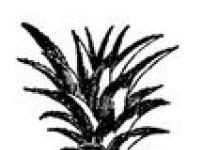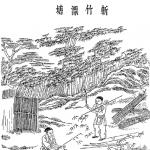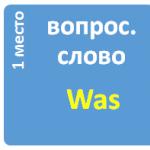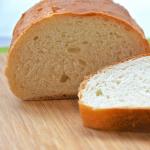In ancient times, people wrote on stones, leaves, tree bark, animal skins, turtle shells, bones and fabric, but each of these methods had many disadvantages. paper in China gave a new impetus to the development of mankind, and we must thank the ancient inventor Tsai Lun for the appearance of the much-needed material today.
Cai Lun was born in the Eastern Han Dynasty (25–220 AD). At the age of 15 he was sent to serve as a eunuch in the imperial court. For his hard work, ingenuity and perseverance, Lun was promoted more than once. During his forty years of life at court, he served five emperors, won their favor and received the title of prince.
One day he was assigned to make tools and weapons for the imperial family, and since then he became interested in various crafts. Very soon, Tsai Lun became a famous master, and the products made under his leadership amazed with their skill.
Before the Eastern Han Dynasty, bamboo wood or silk fabric were used to create books. It was very inconvenient for scientists of that time to keep their records in such books, because bamboo was heavy and silk was expensive. Although hemp paper began to appear at that time, the technology for its production remained immature, and it was accessible only to a few.
Tsai Lun proposed a new method. He ordered his assistants to collect tree bark, remnants of fabrics and nets unsuitable for fishing. His workers then crushed these materials and soaked them in water for a long time. When the mixture turned into a soft mass, it was heated, and then poured into special molds and exposed to drying in the sun. This is how the first samples of paper suitable for writing were obtained.
How Cai Lun and his assistants made paper step by step can be seen in the following pictures:
The invention of paper: stage one. Workers shred the bamboo, remove leaves and soak it in water to decolorize the paper material.
The invention of paper: stage two. The materials are cooked over high heat.
The invention of paper: stage three. Using a special board with holes, the worker takes out part of the resulting mixture - a sheet of paper soon forms on it
The invention of paper: stage four. A lid is placed on each board with the mixture. On top there is another board and a lid on it again. And so many layers
The invention of paper: stage five. The resulting sheets are dried on the wall
In 105 AD, Tsai Lun showed his invention to the emperor, and he was very happy about this innovation. A decree was immediately issued: to distribute the amazing invention throughout the Celestial Empire. Chinese thinkers and scientists sighed joyfully - because now they will be able to write down their thoughts as easily as chopping a young bamboo shoot with a sharp sword. The invention of paper became one of the main engines of Chinese civilization, and subsequently the whole world.
In the eighth century, China began to trade paper with other Asian countries, but the inhabitants of the Celestial Empire kept the secret of its production for more than one century. However, as the saying goes, secrets don't last long.
In 751, during the Tang Dynasty, at a time when China's contradictions with the Arab Empire intensified, several Chinese workers were captured by the enemy. They revealed the age-old Chinese riddle. Soon, paper production was established in Baghdad, and gradually the technology became the property of the entire Arab world. Subsequently, paper craft came to Europe, and from there to other continents of the planet.
According to historical records, the first paper manufacturing plant in Europe appeared a thousand years after Cai Lun invented it. Tsai Lun's method is still used today as the basis of the paper industry - one of the most developed areas of production in our time.
The culture of ancient China showed the world many magnificent creations and inspired the rest of the world to develop, but all this was unthinkable if Tsai Lun had not invented paper.
David Wu, Evgeniy Dovbush, The Epoch Times
Paper first appeared in China. Ancient Chinese chronicles report that paper was invented in the 2nd century. n. e. Tsai Lun. However, as a result of excavations in the Mogao caves, in north-central China, in a 2nd century tomb. BC e. Many scraps of sheets of paper were found, this indicates that paper was invented earlier. Tsai Lun made paper from wood fiber and shredded rags. The resulting mass was mixed with water, placed in a sieve and dried in the sun. Then it was smoothed out with stones.
After Cai Lun's invention, the paper production process in China began to improve. The technology was kept in the strictest confidence, and for many centuries its secrets were known only to Chinese masters. Only at the beginning of the 6th century. They learned about the method of making paper in Korea and then in Japan. Having learned production secrets, the Japanese created their own paper industry: in the ancient capital of Japan, Kyoto, there was a large paper-making workshop that served the imperial court.
Over time, other peoples learned about paper: the Arabs, for example, imported large quantities of paper from China, which were delivered along the Great Silk Road, as the land and sea trade routes that connected China with the Mediterranean, the Middle East and Asia Minor were called. But the Arabs learned the secret of paper production only after the Battle of Talas in 751, when they captured Samarkand. This city, now part of Uzbekistan, was at that time one of the richest and most prosperous cities of the Persian Empire. Samarkand became a center for paper production, from where this material was distributed throughout the Islamic world. The Arabs made paper from hemp and linen rags. After some time, they began to do it in Baghdad (Iraq), and then in other Muslim cities; There were especially many paper-making workshops in North Africa. Paper production began in Europe only in the 12th century.
At first it was imported from the countries of the Muslim world and was of low quality. The Arabs brought the secret of paper making to Spain, from there it came to Italy. In the town of Fabriano in Central Italy in 1268 they began to produce paper that was superior in quality to imported paper. Soon the new product moved beyond the Apennine Peninsula. From Italy, the method of making paper spread to other European countries, including Russia. Paper production began to develop especially quickly after the invention of printing in the 15th-16th centuries. However, the method itself remained labor-intensive, and continued to be used until the mid-19th century. the main raw material was rags.
Until the 19th century paper was considered a luxury item because due to the shortage of raw materials (paper was made from hemp and flax), its production was very expensive. Only in the middle of the 19th century. in Saxony (a region in Germany) they invented the technology for producing paper from wood. The method was improved, and soon paper-making workshops were supplanted by large factories and combines, and the paper itself became cheap and widely available, while its quality increased. And the decline in paper prices sharply reduced the cost of books and helped defeat illiteracy.
Material for writing appeared long before the advent of paper. So, 4000 years ago, the ancient Egyptians used papyrus stems for writing. First, the papyrus was removed from the skin and straightened. After this, strips of material were placed crosswise and pressed. As a result of this process, the papyrus stuck together. This provided good writing material.
But if we talk specifically about paper, the way people imagine it today, then it was invented only in 105 in China. It was invented by a dignitary named Cai Lun. The dignitary began to make paper from the bark of the mulberry tree (also known as mulberry, mulberry). To do this, he used the fibrous inner part of the wood.
To obtain paper, Cai Lun learned bark in water. This was done in order to separate the fibers from each other. To drain the water, the Chinese placed the resulting mixture on trays with strips of bamboo on the bottom. After the water had completely drained, soft sheets remained on the base of the tray, which still needed to dry for some time. So, after the procedure was completed, paper was obtained from the bark of the mulberry tree.
Other theories of the appearance of paper
Other sources claim that paper could have been invented much earlier, even several centuries BC. Only the place where the first paper was made remains the same - China. Proof of this theory are excavations that were carried out in 1957 in Shanxi. There, sheets of paper were found in the tomb; they were made of silk. Scientists dated the resulting artifacts to the 2nd century BC.
According to some historical data, the method of obtaining paper was kept under great secrecy at that time. The Chinese emperor threatened with death the one who revealed the secret of its manufacture to a foreigner. This explains the fact that until 105 no one knew this useful material. In 751, the secret was revealed and it was sent to Spain.
First paper making equipment
The first machine for producing large quantities of paper was produced in the 17th century. It was called a roll. The disadvantage of such machines was that the paper was cast by hand. The device that produced mechanical casting was first created in 1799 in France. But this mechanism received a patent in England in 1806. Its developers were the Fourdrinier brothers.
Today paper is produced all over the world. Cellulose fibers derived from wood, grass or rags are pressed together, dried and shaped into a flexible sheet.
Who invented paper.
There has been much debate about who first invented paper. According to one version, the history of paper begins in ancient Egypt. This assumption is based on the fact that the word “paper” comes from the word “papyrus”, a plant that grows in abundance in Egypt.
The first known person to invent paper.
As history shows, paper and the process of making it were developed in China in the early 2nd century AD. inventor Cai Lun.
How he made the paper.
He is said to have been the first to invent a thin flat sheet or material cleared of bark, grass and rags. In fact, elements of the ancient Chinese method are still used in modern paper mills. This style of Chinese papermaking later spread to Japan, Egypt and Europe, where it was brought to Spain around 1100 AD.
Modifications in progress.
By 1400 paper was being produced throughout Europe, but it was not until three centuries later in the late 1700s that paper began to be produced in long continuous rolls. In 1798, a French paper mill worker invented a machine that could produce a long, thin sheet of paper in various sizes and shapes. Subsequently, this machine was improved and patented by the Englishmen Heinrich and Seeley Fourdrinier in 1807. This invention became key in the development of the newspaper business.
Man first tried to write on rocks, caves, trees, stones and other materials. The invention of paper undoubtedly became an important stage in the development of civilization. Paper is an essential component of the life of a modern person. Whether it's a child or an adult. Even in the era of computers and the Internet, paper products take pride of place. However, environmental problems dictate new standards: “rational use of paper in enterprises.”
Besides paper making, the inventions of gunpowder, printing, and the compass were also made in ancient China, and together they are considered the "Four Great Inventions" of China.
2. Definition.
There are several definitions of paper:
Paper(probably from Italian bambagia - cotton), a material of plant fibers, suitably processed and randomly combined into a thin sheet in which the fibers are bound together by surface cohesive forces.
Paper- These are thin and even sheets or strips of material consisting mainly of cellulose fibers. The length of the plant fibers from which paper is formed is 1–2 mm with a diameter of about 25 microns. The weight of one square meter of paper reaches 250 grams.
Paper– this is a porous - capillary planar artificially created material, accessible to the penetration of air, moisture and paints.
When soaked in water, ordinary types of paper lose their mechanical strength; when impregnated with kerosene or oils
the strength of the paper does not change. This convinces us that the cellulose fibers in paper are connected to each other mainly by hydrogen bonds.
Cellulose from various tree species and annual plants and wood pulp are used to produce paper. Depending on the purpose, in addition to plant fibers, various additives (fillers) are added to the paper composition: mineral substances (kaolin, talc, etc.), which give the paper whiteness, density, smoothness and good printing properties (opacity, paint acceptance, etc. .); sizing materials (rosin glue, starches, resins, etc.), making the paper impermeable to ink or increasing the strength and density of the sheet; paper dyes; chemical fibers for special purposes types of paper.
3.Pre-paper materials .
Paper had many predecessors. Stone and clay, leather and birch bark, wax and metal, papyrus and parchment.
What was used for writing in ancient times? What nature created – stone and wood. The first “pen” was a knife and an ax. Not only stone, but also metal preserved ancient inscriptions for thousands of years. Residents of the Ancient East wrote on thin lead strips that were rolled into rolls. Three thousand bronze, copper and lead inscribed plaques decorated Rome in the 1st century.
The Assyrians and Babylonians, who lived thousands of years ago, wrote on damp clay tiles with a sharpened stick. It was pressed into the clay, and then quickly removed, so that the mark had the shape of a wedge. This type of writing was called “cuneiform.” Even and small lines filled the tiles. Clay for them was collected along river banks and thoroughly mixed with water. Impurities (straw, grass) floated up, the stones settled, and pure clay remained. They made tablets from it and wrote text on them. After firing, the tiles became strong and durable. . Clay- a unique writing material given to man by nature. Writing on wet clay is almost as easy as writing on paper, and baked clay becomes as strong as stone.
Manufacturing papyrus originated in ancient Egypt approximately 3.5 thousand years BC. It was prepared from a single reed plant growing in the lower reaches of the Nile.. This plant had a straight triangular stem up to 5 meters high. To prepare the writing material, only the lower part of the stem, about 60 centimeters long, was used. It was freed from the outer green layer, and the white core was cut with a knife into thin narrow strips and kept in fresh water for 2-3 days to swell and remove water-soluble substances. The softened strips were rolled on a board with a wooden gurney, then soaked again for a day, rolled and again immersed in water. After these operations, the strips became translucent and had a creamy tint. The strips of stem were then stacked on top of each other, dehydrated under a press, then dried under a press and smoothed with a smooth stone.
In the 2nd century BC. In Asia Minor, in the kingdom of Pergamon, in the city of Pergamum, the production of excellent material for writing was organized from the skins of young animals processed in a special way - calves, lambs, goats, donkeys.
The material was also named after this city. "parchment". Unlike papyrus, parchment was much stronger, more elastic, more durable, it was easier to write on it, and on both sides, and, if necessary, the text could be easily washed off and a new one applied. But despite these advantages of parchment, its production was labor-intensive and it was an expensive material.
4. History of paper creation
Paper is a very ancient invention. She was known in Ancient China. The father of paper is considered to be the Chinese Cai Lun, who invented paper in 105 AD. “Bamboo is too heavy, and silk is expensive,” said the court chronicler Wang Zi.
Silence reigned in the hall, and, it is difficult to say why, all heads suddenly turned to Cai Lun. Yin Ching, an official who was haunted by Tsai Lun's successes, sarcastically stated:
- Probably, this time Tsai Lun will show his genius. After all, everything he touches turns to gold.
Tsai Lun did not have time to say a word in response when the emperor himself addressed him (for the first time without any intermediaries), and...
And he appointed him minister-adviser. He was instructed to find writing material is no worse than silk, but much cheaper. Cai Lun's search led him to the wasps. The thin but durable material from which the wasps' nests were made was most similar to what he was looking for. After conducting hundreds of experiments, the scientist came to the conclusion that something similar could be obtained from mulberry bark, hemp bast, torn fishing nets and old fabrics. All this must be ground and boiled, mixed with a liquid similar to insect saliva. The resulting mass you need to scoop it with a sieve made of silk threads attached to a bamboo frame. When all the water has drained, the remaining wet leaf should be soak in a secret composition. All that remains is to dry and smooth it between the stone slabs. And here it is - the desired material, which does not absorb ink, on which the contours of what is written do not blur.
These events happened in the first year of the Yuan-ping period, which we call 105 AD.
China and Japan plays an outstanding role in the development of paper production. To govern vast territories, every state needs educated people. This could not be achieved without developing writing. The key point of this activity was cheap and affordable paper. Paper had many predecessors: stone and clay, wood and bone, wax and metal, leather and birch bark. But all of them were not good enough - short-lived, expensive, difficult to use, accessible. Industrial paper production from natural raw materials has become the greatest achievement of the human mind and the source development of our civilization .
In medieval Italy The “papermen” replaced the Chinese mortar for grinding raw materials with millstones driven by water, and began to glue the paper with animal glue, thanks to which it no longer allowed ink and printing ink to pass through. In the 17th century Holland took the lead, where a roller machine was invented for fast and uniform grinding of raw materials. Paper making machine appeared at the turn of the 18th-19th centuries, wood began to be used as a new raw material. Machine ebb paper was first used in 1804 in England. From this time on, machine production became dominant and turned into large industry .
Self-produced paper appeared in Rus' in the second half of the 16th century during the reign of Ivan the Terrible. The beginning of mass paper production in Russia was laid down by Peter I. To provide factories with raw materials, by royal decree, the army and navy collected old sails, untarred ropes, ropes and rags. Civilians were asked to bring the remnants of worn-out linen items to the office of the police chief “for a fee,” and a “rag” tax was taken from the peasants. Development paperwork contributed decree of 1721 on mandatory use in official records domestic paper .
Then they made it like this: scraps of silk wool, rags, old fishing nets were crushed and thrown into a vat of water, shaken until a homogeneous, watery mushy mass was obtained, which was scooped out with a bamboo net. The sediment that remained laying in an even layer on the mesh was dried. This principle works, and today, only the means of production, scale, speed and raw materials have changed.
For a long time it was possible to keep this method secret, and only at the beginning of the 6th century it was exported to Japan. Around the same time, paper production began to penetrate other Asian countries. Unlike the Chinese method, in which paper was made from fresh plant fiber, due to the lack of such raw materials, paper began to be made from hemp and linen rags on silk or hair sieves stretched over a wooden frame. After preliminary squeezing out the water, the sheet was transferred to cloth, wrung out and then air dried. Subsequently, this method was brought by the Arabs through Persia to North Africa, Cyprus, and then to Spain, Morocco and a number of other countries. Paper gradually began to replace the previously used papyrus and other writing materials. From Spain, paper production penetrated to Italy, and then to all European countries, incl. and Russia. Paper appeared in Russia in the 14th century. Until this time, they wrote on parchment. It began to grow especially quickly after the invention of printing in the 15th and 16th centuries. However, the method itself remained labor-intensive and unproductive, and, as before, until the mid-19th century. the main raw material was rags. Invention at the turn of the 17th-18th centuries. in Holland a new grinding apparatus - roll and proposed by the Frenchman N.L. Robber's mechanized casting of paper onto a continuously moving endless mesh located above a bailing vat served as the beginning of machine paper production. Subsequently, continuous sections for pressing, drying, calendering and winding paper into rolls were added to this primitive equipment.


















